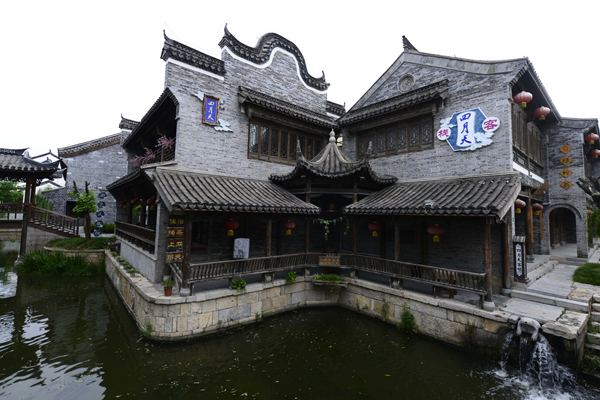

 |
|
Old style houses in Tai'erzhuang ancient city, East China's Shandong province, Oct 14, 2013. [Photo/Asianewsphoto] |
BEIJING - China announced on Thursday that efforts had been stepped up to preserve ancient villages and more was on the way, as old-style settlements face a crisis of decline, decay and even extinction.
The country is home to 12,000 old-style or traditional villages, 80 percent of which were established before the Qing Dynasty (1644-1911), and quarter before the Yuan Dynasty (1271-1368), said Zhao Hui, director of the rural township construction department under the Ministry of Housing and Urban-Rural Development.
A nation-wide survey, launched in May last year, was the first of its kind, Zhao Hui told a press conference in Beijing.
The survey had identified more than 2,000 key cultural preservation sites and over 3,000 provincial-level intangible cultural heritage sites. Villages typical of the nation's ethnic groups were included in the survey.
"The census was a big check up of the nation's traditional and cultural health," said Zhao, warning that rapid urbanization and industrialization, during the past 30 years or so, challenges a culture thousands of years old. Relics of China' s agricultural past are threatened, and will vanish with traditional villages.
The term "traditional" covers three categories of village: those dominated ancient buildings, those with unique elements that reflect the essence of Chinese culture, and those rich in intangible cultural heritage.
An expert committee has been established for the protection and development of these old-style villages, and the government is compiling an atlas with introductions to every designated village, including photos and text. So far, the atlas comprises 1,561 of them.
Of the settlements, 294 are in Southwest China's Yunnan province, well-known for its ethnic diversity. Guizhou province, also in the southwest, follows with 292, with a significant number in East China's Zhejiang and Fujian provinces, Zhao said.
"The ministries of culture, finance, and urban-rural development have three to five years to extend these surveys and improve the catalogue, identifying those which have value for protection," Zhao said.
Settlements in the improved catalogue will be documented, paving the way for a nationwide medium- and long-term preservation plan.
The Ministry of Finance has confirmed greater financial support for preservation work.
China's leadership attaches great importance to protecting these historical places. President Xi Jinping has stressed that ancient communities must be safeguarded, condemning widespread demolition and new construction as incompatible with the ideal of building a beautiful country.
Zhao believes securing these locations must be prioritized in light of the rapid expansion of China's cities, and urges greater protection for them under the law.